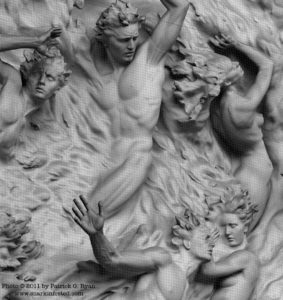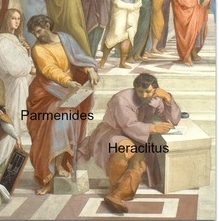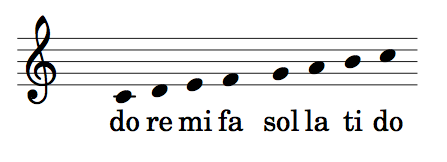Then the heavens and the earth were finished, and all the host of them. And on the seventh day God finished his work that he had done, and he rested on the Sabbath day from all the work he had done. So God blessed the seventh day and made it holy, because on it God rested from all the work that he had done in creation. Genesis 2:1-3
Jack’s seventh-day dream
It’s late Saturday afternoon in Pleasant Valley subdivision and Jack Johnson is relaxing, remote in hand, in his new Laz-E-Boy recliner with the tweed upholstery that complements the carpet. His wife is cooking up a stir-fry in the kitchen, and though he would prefer steaks or hamburgers, he didn’t volunteer to man the grill. So he will take the consequences, which aren’t that bad. She uses a lot of garlic, and that’s some compensation. Also long-grain brown rice with that full-bodied nutty smell that could almost tempt him to vegetarianism if it weren’t for things like grilled hamburgers. Or bacon. Ah, bacon . . . He had some for breakfast this morning, and he could write a poem about it, if he were a poet. Were I of poetic mind,/ What excellencies might I find/ In thy tender waves of salt and crunch/ That beckon me to munch a bunch—
Ow. What’s that in his jaw? Lower right molar? Is his toothache coming back?
Jack turns his head to ease the pressure. The sounds of his children drift through the open window from the driveway, where they’re playing pick-up basketball with some neighbor kids. At least, 10-year-old Ashley is trying to play. Jack can tell from her piping tones that Calvin lets her take a shot now and then. Cal is a good kid, for a teenager. They’re both good kids. Thump. Thump. Thump. Clutter-clutter-CHING! “Two points! Lay it up, Ash.”
Calvin’s voice cracks a little on the “up.” Jack has to smile, remembering himself at fourteen. Wouldn’t repeat it, but there’s a touching vulnerability about—
Ouch. He shifts in his char again. Might need to set up a dentist appointment tomorrow. Hates to go, of course—who enjoys going to the dentist? But sooner or later . . .
From the kitchen, on the classic rock station Julia is listening to, comes the flat-string cadence of an unmistakable rhythm—bum-bum-bum-ba-dum, bum-bum-bum-ba-dum—followed by a catchy melody he can’t help humming: “. . . lookin’ out my back door.” Boy, that takes him back. Summer nights down by the river, hot girls and cold beer; his foot is tapping out the rhythm to John Fogarty’s plangent tone: “Just got back from Illinois . . .”
Julia echoes from the kitchen. He pictures her swaying in time to the music, her hips moving in that cute, innocently suggestive way that sometimes puts ideas in his head—
The remote bounces off the carpet as Jack clutches his jaw. That does it. First thing tomorrow, he’s calling Dr. Groves and demanding to get in. Or if they say they’re full, he’ll just show up in the waiting room and tell them he’s not leaving until–

“Argh!” His recliner bolts upright as Jack doubles over. Pain rips through all other sensations; everything that pleased him thirty seconds ago now mocks him. Crisp bacon, lilac blooms, plush pillows, fond memories, love for his wife and children—mean nothing! Pain chomps through the veneer of his peaceful life with jagged teeth. He clutches his head, choking back a scream . . . .
. . . and tumbles headfirst into a dream. Or is he awake? The pain is certainly awake, stomping gleefully on all his nerves like a demented two-year-old.
But maybe that’s the wrong way to think of it. This is all going on inside his own body, after all. The pain is part of him.
No, the pain is you. You are the pain.
Who said that? Did he say that? It’s not the kind of thing he’s apt to say. His conversation is more on the order of, Has anybody seen the hammer? or, How about those Raiders?
At any rate, it doesn’t hurt so much now. Jack feels around his head and meets no walls or boundaries. The sensations of sight, sound, smell and touch don’t go away but they seem to swirl together, a spiraling symphony of separate strands all joined at the center. He must get to the center, where the self resides. Except that he seems to have shrugged off self; it’s dropped like a ton of bricks. He doesn’t miss it at all. His wife and kids and every other living creature meet him here, where all is truly one and pain and suffering lose their power to disturb. This is rest. This is peace. This is genuine, true . . .
Ow. Ow ow ow OW!
This isn’t working. His brain dials up another vision.
There’s a sword in his hand—a light saber. Aha! This is more like it. He takes a practice swing and cleaves reality in two. Dark side, light side. Good-evil, up-down, wet-dry, male-female, war-peace, sick-well. He gets this; it’s all a struggle between opposites, a lack of balance. One tooth has decided to rebel against the rest of his body and he must call the darn thing out. Get back in line, you misbegotten knave! Get back in harmony with your fellow teeth and stop calling attention to yourself! Backing the pain into a corner seems to lessen it, though it still snarls at him. But then a question sneaks up from behind: if life is a matter of us/them or me/is, who is me, and who or what is my opposite? And is there an opposite of pain, other than not-pain? He flourishes the light saber again, but the questions persist, making it hard to concentrate, and soon his whole head is throbbing, not just his jaw.
Jack wakes up. That was some ride, though he has no clue where he went. Slowly his life resumes its normal dimensions of sounds and smells and the second hand sweeping around the clock face over the mantel. And yes, he has a toothache, which has hunkered down to a dull, persistent throb. Resolutely he puts his hands on the nubby surface of the recliner arms and pulls himself up. First, aspirin. Then he’ll find Dr. Groves’s home number and beg him to meet him in the office in half an hour. The dentist’s office is no place to spend a Saturday but at least it’s a plan.
_______________________________________
How to have a conversation
The Brick Bible, by Brendan Powell Smith, purports to tell the whole Bible Story in Legos. This seems like a clever idea but in reality it’s deeply subversive, and not only because Smith is a professing atheist with a declared interest in undermining faith. Even if he were a devout Baptist with a gift for tinkering I wouldn’t recommend his book, solely for its depiction of God as a Lego man in a white robe, with a white beard and angry eyebrows. For the first six days he conjures up pebbly water and blocky vegetation, building up to a big finish with the appearance of a naked Lego man. And on the seventh day, angry eyebrows still intact, God strings up a hammock between two of the trees he made, pours a tall glass of lemonade and “rests.”

From Powell-Smith to Michelangelo is a huge leap, like that from a backyard studio to the Sistine Chapel ceiling, where God stretches out his fingertip to ensoul Adam. Impressive as he may be, with his muscled chest and flowing beard, Michelangelo’s Jehovah is as inadequate as Smith’s. God on a chapel ceiling and God as a two-inch plastic figure are equally reductionist—not only because we don’t know what he looks like, but because even that terminology, “What he looks like,” takes us down a false path.
Up until now we have taken a lot for granted. What’s that? you say. Time, space, direction? Didn’t we go back and account for all those things that other creation stories take for granted?
I’ve tried to show that, for God, creation is not a matter of reorganizing what’s already there, but actually making a “there.” What we haven’t considered yet is God himself—who or what is he (she, it, they)? On the seventh day, as God “rests,” we should take the opportunity to turn away from what he made and contemplate Him.
Because he is not really resting, or not in the sense of kicking back in a hammock with a tall one. Perhaps he is pausing, as he asks us to do on the seventh day.
Classic Christian doctrine teaches that God is three persons in one being. Jews and cults deny it, agnostics ignore it, atheists dismiss it, and even some Christians brush it aside as irrelevant or impossible, or just not very interesting. An orthodox church will include Trinitarian teaching in its syllabus, especially in relation to how God works in salvation (the Father wills it, the Son accomplishes it, the Holy Spirit applies it). Which of course is excellent. But the application of this doctrine extends far beyond salvation. I suspect the doctrine of the Trinity is the key to the nature of personhood, thought, creativity, knowledge, and reality itself.
I am here. You are there. We are located somewhere on a planet, the planet in a solar system, the solar system in a universe. This is evident, but how did it happen? If it’s created—which mainstream science denies but almost everyone believes—what sort of being created it? Systems and dogmas and modern-day mashups claim to have the answer, while agnostics claim there is no answer. But boiled down to their essence, we are left with only three possibilities.*
1. Monism: God is everything, and everything is God.

In the beginning, out of Himself, God said—no wait, God didn’t say anything, and in fact it’s meaningless to speak of God as himself because “everything” can’t be a gender or singular personality. In the beginning there just Is, and all that arises from That Which Is—all landscapes and species, all molecular arrangements—are manifestations of the One. And ultimately all distinctiveness is an illusion, because All is One. That leaf, that raindrop, that butterfly is of the same Oneness as you, and their goal is the same as yours: to get back to perfect unity where there are no distinctions.
When pain intrudes, human consciousness recoils; where can it find relief? Where there are no distinctions there is no strife, no suffering, no pain. No gain either, because the concept of value disappears. No part of Oneness is more necessary or precious than any other: “part” is itself an illusion, for remember, All is One. Which means there can be no loss, because there is, ultimately, nothing to lose. And the soul is at rest, if it’s anything that can be called a soul.
Monism seeks peace at any price, and the price is human personality.
That’s one problem with monism—we can’t keep from behaving as though we had a personality, even if we think it’s only temporary. The other problem is that Oneness cannot create; it can only differentiate. All distinctions that we perceive are a result of maya, or illusion. Maya is a bad dream from which all humanity will awake, eventually, to the perfect Oneness where
Nothing. Ever. Happens.
If the toothache is bad enough, we would welcome perfect Oneness (i.e., oblivion). Otherwise, particulars have a way of intruding.
2. Dualism: God is a continual dynamic between opposites (unless he taking one side or the other).
In the beginning was pure energy, which split itself in two. And now we’re getting some action: the universe is locked in perpetual struggle of yin and yang, light and dark, and its goal is to achieve harmony or balance between them. The object of life is struggle.
Pythagoras was a fan, and perhaps the first to clearly articulate a dualistic system. Opposites fuel the

cosmos, beginning with the primary dichotomy of limited/unlimited. Nine more pairs of opposites, added to the first, summed up to a perfect Ten: odd/even, one/many, left/right, male/female; rest/motion, straight/curved, light/dark, good/bad, square/round. Farther east, Zoroastrianism and Taoism came to the same conclusion: reconciling yin and yang is the aim of life and human history.
Georg Friedrich Hegel’s famous “system” is the soul of dualism. Hegel saw human history, both global and individual, as a clash between duty and self-interest, a perpetual struggle between truth and falsehood, good and evil. As a culture moves forward in time it develops a thesis–an overarching principle of how the world works (for example, Might Makes Right). A competing idea develops, usually within that same culture: the antithesis (such as Right Serves Might). Variations of these themes will appear also, but the two main ideas will go at it hammer and tongs, trading taunts and punches and sometimes bullets, until the society achieves some sort of synthesis between the two. This will have to sort itself out before it acquires a label (Might Serves Right unless No One is Looking) and becomes an operating principle, which may enjoy a brief heyday at the top before the antithesis develops and we start the whole process again.
Heraclitus would be proud, because the river of time is continually in flux. His theory of perpetual change is vindicated . . . except when (if) we achieve perfect balance, at which distinctions collapse and labels become meaningless. Parmenides smugly smiles and the rest of us (if we’re conscious at all) ask ourselves (if there’s anyone left to ask), what that sound and fury was all about. But if, on the other hand, perfect balance is beyond our grasp, we may as well sit back and enjoy the ride. Rest is not happening. Thing and not-thing, quality and anti-quality are locked in continual struggle, not eventual resolution. It moves, but it’s not going anywhere.
3. Trinitarianism: God alone is God, and God is not alone.
In the beginning God spoke and acted and everything that is came to be. Think about that. I just wrote that sentence: fourteen words, arranged in a grammatical order that makes sense—not just to me, but to you. You may not agree with the idea expressed in the sentence, but you understand the idea. A triangular process was just completed: the words I wrote, the words you read, and the understanding that now exists between us. Without all three sides of that thought, there is no communication.
Now consider—
The Creator conceives an idea: “Let there be.”
The idea takes on Form and substance: “And it was so.”
That form and substance provokes a Response: “And God saw that it was good.”
Without a creator who is diversity-in-unity, there is no creation. Monism can make no distinctions; all it can say is I = Everything. But nothing truly acts, and therefore nothing reacts. All exists to be eventually distilled into Oneness—or, if you like, pure Noun.
Dualism is all Verb: act, react, theorize, anti-theorize, do, undo. It’s dramatic and exciting and looks great on a movie screen. But it makes no provision for how it came to be, and its logical end is oblivion.
 The Trinitarian God is neither noun nor verb; if we’re speaking in grammatical terms, he is a sentence. He even expresses himself as a sentence: I am. In him is the thought, and the meaning of the thought, and the shared understanding between the thinker and the meaner.
The Trinitarian God is neither noun nor verb; if we’re speaking in grammatical terms, he is a sentence. He even expresses himself as a sentence: I am. In him is the thought, and the meaning of the thought, and the shared understanding between the thinker and the meaner.
We’re looking at the only kind of Creator who could be in creation without being creation—that is, the only kind who can actually create. Instead of somehow diversifying what he already is or manipulating what is already there, the three-personal God has started a conversation within himself (“Let us . . .”) in which thought and meaning produces material reality. He has established, from the ground up, all that is necessary for anything in the material universe to exist: space and time, stability and change, growth and proliferation, forward motion and pause. In biblical terms, he has built his temple.
On the seventh day, he enters it.
If you missed earlier episodes of this series, here’s Creation, Day One: Where Does Darkness Come From?
____________________________________________
1. Do a little research into Zen Buddhism and think through an imaginary dialogue about creation and where it came from. Or better yet, have such a dialogue with a Zen Buddhist. Or, if you happen to be a Zen Buddhist, write it.
2. How do popular stories and superhero legends like Star Wars, The Avengers, Percy Jackson and the Olympians, etc., reflect dualism? How about the Babylon creation story?
*Thanks for the following to Ellis Potter’s 3 Theories of Everything.












 Besides paranormal sexiness, change was the attraction, as it is for every soap. Every single day brought new plot developments and twists and secondary characters tracing their arc across umpteen episodes. Would she, won’t he, could she, will he—and suddenly I realized that the show had no being, only becoming. Barnabas’ story would never resolve; nor Quentin’s. Just endless cycles until, like me, everybody got fed up. Dark Shadows was a smashing success for about two years. When the novelty wore off the mechanics of change-for-the-sake of-change were exposed for all to see. Other soaps, like Days of Our Lives and General Hospital ran on the same principle, but doctors and rakes and gamblers and vamps have more than one trick up their sleeves, and could keep an audience guessing longer than vampires and werewolves.
Besides paranormal sexiness, change was the attraction, as it is for every soap. Every single day brought new plot developments and twists and secondary characters tracing their arc across umpteen episodes. Would she, won’t he, could she, will he—and suddenly I realized that the show had no being, only becoming. Barnabas’ story would never resolve; nor Quentin’s. Just endless cycles until, like me, everybody got fed up. Dark Shadows was a smashing success for about two years. When the novelty wore off the mechanics of change-for-the-sake of-change were exposed for all to see. Other soaps, like Days of Our Lives and General Hospital ran on the same principle, but doctors and rakes and gamblers and vamps have more than one trick up their sleeves, and could keep an audience guessing longer than vampires and werewolves. hindered from coming, and that they possess some quality that preeminently suits them for membership in the kingdom of God. You’ve heard sermons on the “for such belongs” part, so I won’t dwell on it here. I’m interested in “Let them come” and “do not hinder.” Two questions: Would little children freely come? And if so, how are they “hindered”?
hindered from coming, and that they possess some quality that preeminently suits them for membership in the kingdom of God. You’ve heard sermons on the “for such belongs” part, so I won’t dwell on it here. I’m interested in “Let them come” and “do not hinder.” Two questions: Would little children freely come? And if so, how are they “hindered”?
 perfect circle, it struck him that the ratio of the two circles equaled the orbits of Jupiter and Saturn. What if all the planetary orbits displayed a similar geometric relationship? The hypothesis didn’t work out quite as well as he hoped, but speculation along this line led to Kepler’s three laws of planetary motion and the discovery that a) orbits are elliptical, not circular; b) a planet’s speed varies between aphelion (when it’s closest to the sun) and perihelion (its farthest distance from the sun); and c) the duration of any planet’s orbit depends on that planet’s distance from the sun.
perfect circle, it struck him that the ratio of the two circles equaled the orbits of Jupiter and Saturn. What if all the planetary orbits displayed a similar geometric relationship? The hypothesis didn’t work out quite as well as he hoped, but speculation along this line led to Kepler’s three laws of planetary motion and the discovery that a) orbits are elliptical, not circular; b) a planet’s speed varies between aphelion (when it’s closest to the sun) and perihelion (its farthest distance from the sun); and c) the duration of any planet’s orbit depends on that planet’s distance from the sun.


